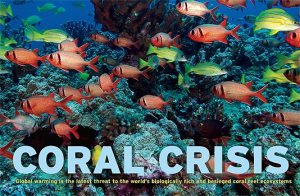The opening sessions of the United Nations Climate Change meeting in Doha, Qatar witnessed the United States resisting pledges of steeper cuts in greenhouse gas emissions. U.S. Deputy climate envoy John Pershing stated, “President Obama was sticking to his 2009 goal of cutting emissions by 17% below 2005 levels by 2020″. Even that target was rejected by the U.S. Senate.
The United States’ refusal to back the Kyoto Protocol has been joined by China, Russia, Japan and Canada, leaving the European Union and Australia as the larger countries supporting the pact, along with ore than 100 developing countries and Kyoto backers. The recent protocol dropouts agree with the position of the United States that “it is meaningless to extend cuts under Kyoto when big emerging countries have no curbs on emission”. It is for this very reason that the United States never ratified the Kyoto Protocol. The worry here is that without extension of the Kyoto Protocol, there only would be national actions without any legally binding UN pacts.
With the devastation of Hurricane Sandy and its ever-increasing price tag still on the minds of Americans, along with the acknowledgement of key political figures that climate change and global warming are harsh realities that need urgent attention, it is evident that Americans are ready to tackle these issues. Additionally, President Obama pledged to do more to address the issues of climate change in his second term. With or without the Kyoto Protocol, it is important that we as citizens educate ourselves on the issue of global warming and greenhouse gas emissions, keeping dialogue on the forefront. More than ever, we must demand that our elected officials commit to plans to upgrade failing power grids and outdated infrastructure and to implement solutions for cleaner and more efficient energy. Now is the time for America to take the lead and be the driving force to effect change so that we live green, be green.
Source for this article:
http://www.engineeringnews.co.za/article/us-holds-to-climate-goals-despite-poor-nations-pleas-2012-11-27



